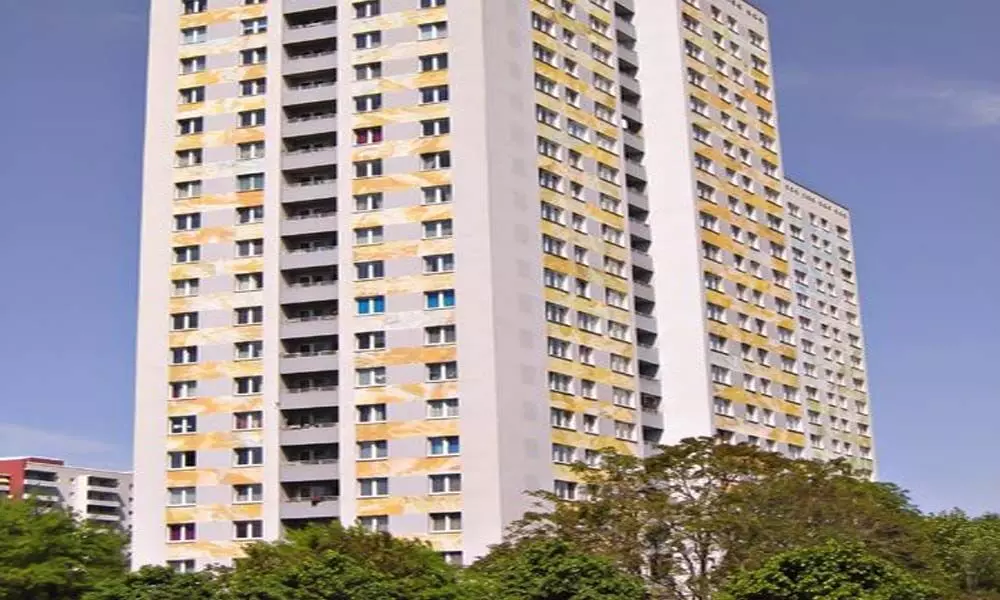Search interests in all housing segments rise, but may not translate into sales
All the segments see an uptick in search interests despite a fall in the employment rate. But Google trend related to home buying appeared highly correlated to urban employment
image for illustrative purpose

In recent months, Indian newspapers have been sprinkled with updates on sales of luxury homes across India. With municipal taxes on acquisition of properties being slashed in some metros (such as Delhi) and correction in home prices, those who can, find it an opportune time to buy homes. According to PropEquity, luxury home sales in the NCR increased by over 50 per cent (YoY) in February. Mumbai, Bengaluru and Pune are not far behind. Sotheby's Realty observes the highest demand in Rs15-25 crore price bracket. An India-based home (or for sale flats) priced above Rs50 crores and listed internationally (in foreign currencies) is no rarity.
2020, however, was characterized by contrasting trends from other spheres of the real estate industry, the 'affordable' segment in particular. In the same time-period, affordable-housing focused construction companies witnessed 20 per cent drop in sales (double the drop compared to 2008), and the credit rating of housing finance companies generally fell. Salaries and wages expenses dropped by nearly 12 per cent per quarter in these companies. In short, new supply was significantly low.
Although overall homes sales in the first quarter of 2021 witnessed an uptick, in the first three quarters of 2020, housing sales had halved, and the home prices of under-construction properties (according to NHB's Residex) remained flat despite slowdown in new supply. As the supply was modest, the disciplining in home prices is likely attributable to moderation in demand.
What could possibly explain the contrast?
Anecdotal evidence suggests that lower strata of the society were more severely affected by the pandemic than upper strata. Modestly waged households and smaller businessmen took the brunt of lockdowns while many in the strata above them managed to work from home salvaging a large part of their income stream.
By March 2021, the employment rate in urban India had fell by 4 per cent (YoY). The fall was as bad as 24 per cent in women. Interestingly, the employment rate among people with graduate (or higher) degrees has been worst hit in the previous fiscal year as depicted in the CMIE data below.
Do you buy what you search for?
While it is challenging to read the minds of real estate investors, recent scientific studies have provided an effective tool for monitoring their thought process: Google search trends. Scientific studies have shown that these trends can be used to predict the behavior of investors and consumers. In recent years, Google trend related to home buying appeared highly correlated to urban employment rates, as shown below.
Given low rental yields and modest price appreciation, it is rational to consider homebuying in Indian middle classes as consumption activity rather than investment. Social scientists see consumption disparity between the rich and the poor with the lenses of wealth inequality. If so, do these luxury home sales imply the opportunistic interests from the wealthy, while the poor are struggling for their daily bread?
Luxury home sales reflect the purchasing behavior of the wealthy. But, can we be sure that the interest in residential purchases has not shot up in the relatively lower classes during pandemic times?
Review the plot of search trends for different home types for the last decade. In general, searches in all segments have shown an upward trend. Until 2016, 1BHK witnessed the highest degree of interest. However, since then 2BHK has taken the lead. The interest in these relatively smaller homes has also witnessed a secular, upward trend. Interestingly, after a systematic plummet in March 2020, all the segments experienced an uptick in search interests despite a fall in the employment rate. Perhaps the pandemic desperation has forced households to consider homebuying that would not have been a priority earlier.
So long as the search trends are correlated with demand (as shown in earlier scientific research), the graph above also portrays that not only has the interest in smaller homes risen more sharply, it is also more volatile. Comparing the interests at the two extremes: Affordable and Luxury segments (as shown below) further confirms the observation.
The income uncertainty leads to stringent mortgage underwriting. This may imply higher down payments, shorter amortization terms and heavier debt-service requirements. In the luxury segment, homes tend to be a relatively smaller part of a household's wealth. Besides, the financing reality for the luxury segment is different. Lenders pursue such clientele and offer more favorable loan terms.
The bottom line is that the search interests in all housing segments have been on the rise, in general. However, in the affordable segments, the interests may not necessarily translate into sale due to financing concerns whereas, the luxury segment buyers may find the pandemic an opportune moment to invest in undervalued assets.
(The author is Associate Professor of
Real Estate Finance at IIM Ahmedabad)

